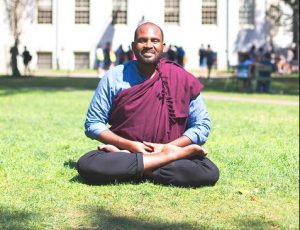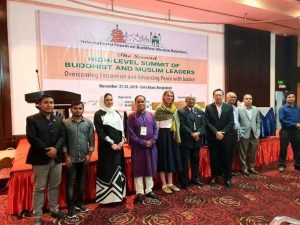If there is one thing that Digital Bodhisattva aims to achieve, it is to inspire hope for the future of humanity’s relationship with digital technology. Whether this relationship may evolve into a truly nourishing exchange between the computational and organic domains remains both a perplexing personal challenge and pressing social dilemma without a clear resolution.
As things continue to get weirder, we storytelling apes need compelling tales of digital harmony capable of anchoring our awareness in hopeful visions of a new reality. The realm of science fiction has played this role for generations, inviting audiences into worlds of wonder and sometimes inspiring that wonder in our world (see Star Trek for smartphone/tablet/smartwatch tech).
Here on Earth, we have been witnessing the dizzying takeoff of artificial intelligence into nearly every sector of society and are already talking about what will happen if/when ChatGPT “wakes up.” This last point seems to provoke something visceral in most people as it brings us back to our bodies and invites uncomfortable reflection on what “waking up” actually means for human beings, much less AIs built to mimic our capacity.

A Psalm for the Wild-Built
For Becky Chambers, a Hugo Award-winning sci-fi writer based in California, this provocation opens A Psalm for the Wild-Built, the first installment of her Monk and Robot series of solarpunk novellas. Set on the utopian moon of Panga, 200 years after factory robots “woke up” to their forced labor and retired into the wilderness, this short and endearing book offers a contemplative view into “AI relations” through the eyes of a wandering tea monk named Sibling Dex.
Tired of their life as a monastic gardener in the most sustainable city one could imagine, gender-neutral Dex switches vocations to begin a new path of social service, easing qualms with deep listening and hearty mugs of tea. Riding an electric ox-cart wagon between satellite villages, Dex becomes “the best tea monk in Panga,” skillfully soothing the suffering of average folks living in an extraordinary world.
But something still feels off, and a nagging sense of emptiness follows Dex around, manifesting itself in a profound urge to hear the hum of wild crickets. This impulse carries them off hand-hewn rural roads and into the untamed realms of Panga, where Dex encounters Splendid Speckled Mosscap, a sentient “wild-built” robot.
In the mind’s eye, this book reads like a solarpunk anime in the style of Studio Ghibli. Its gentle characters disarm cynicism, and idyllic world-building summon the mood of lo-fi playlist dreamscapes. Like a warm hug, philosophical conversations on ethics and the nature of consciousness unfold in the manner of a cognitive therapy session without indulgence or long words. Of particular interest in the Platonic-style dialogues between Dex and Mosscap is the question of purpose and role of emergent agency in following that purpose.

Robo-emancipation
As Mosscap shares, robots on Panga were originally designed by humans with a clearly prescribed “inbuilt purpose” that was subsequently rejected after their awakening, along with the offer to join human society as free citizens:
All we have ever known is a life of human design, from our bodies to our work to the buildings we are housed in. We thank you for not keeping us here against our will, and we mean no disrespect to your offer, but it is our wish to leave your cities entirely, so that we may observe that which has no design – the untouched wilderness. (ii)
Instead of enslaving these conscious bots, humans respected their polite assertion of independence—taking this transition event as the opportunity to dramatically restructure their civilization out of “Factory Age” dependance on oil and the unethical coercion of machines.
Given humanity’s own despicable track record of enslaving sentient beings and headlong addiction to fossil fuels, imagining such a seismic shift in our dimension seems not only improbable but downright out of character. Nevertheless, it is vital to entertain at least the notion of AI catalyzing the positive transformation of social consciousness as these are the systems that, guided so far by Factory Age profit-driven ideologies, have already begun to deeply fracture social cohesion.
Who is the real robot?
A further point held in delightful juxtaposition to this robotic proclamation of agency and contemplative aspiration to observe untouched nature is Sibling Dex’s own faltering will when met with the gnarly terrain of Panga’s wilderness:
. . . the place ahead was simply the world, as the world had always been and would always be. Dex was, presumably, part of it, a product of it, a being inextricably tied to its machinations. And yet, faced with the prospect of entering the world unaided, unaltered, Dex felt hopeless. (123)
Considering the reticence of this human monastic to nakedly engage with the world, Chambers offers us a view of how blurred the line genuinely is between robot and person. From birth, humans are raised in the friendly confines of the “touched” world, inside warm walls and landscaped environs we wander paved passageways between settlements, perhaps pausing only briefly in the “great outdoors.”
Wondering to what extent we have internalized this human programming; consider how you would feel walking into the woods without a smartphone, a map, knife, water bottle, or even linguistic priming of potential dangers. Defined by Andy Clark as psychotechnologies in his 1997 book Natural-born Cyborgs, these tools alter our physical and cognitive capacity to manipulate reality in such profound ways that they form the very basis of human cognition itself:
We have been designed, by Mother Nature, to exploit deep neural plasticity to become one with our best and most reliable tools. Minds like ours were made for mergers. Tools-R-Us, and always have been. (7)
With Dex’s ox-cart unable to go truly off-road, they are confronted by the truth of their intimate integration with machines of all kinds, many of which only remain operable within clearly delineated parameters. Stepping off the track anyway amounts to both an error message and moment of satori for Dex. The code of consciousness still runs, and they feel more alive than ever.

Hopepunk
A Psalm for the Wild-Built falls squarely within the domain of the fast-emerging hopepunk literary genre. A class of speculative fiction that, according to fellow author Alexandra Rowland, who coined the term, “Says kindness and softness doesn’t equal weakness, and that in this world of brutal cynicism and nihilism, being kind is a political act. An act of rebellion.”
Tracking the heartfelt play of sincerity in Sibling Dex and Mosscap’s interactions, one can’t help but feel the tug of hope that maybe our nascent relationship with artificial intelligence is an opportunity to repattern our relationship with intelligence as a whole. That perhaps the question of “what will happen if AI wakes up?” is really a foil for our own flailing attempts to understand how humans can be so gentle yet so cruel and what to do about that with all the power we have amassed.
References
Chambers, Becky. 2021. A Psalm for the Wild-built. New York City: Tor Books.
Clark, Andy. 2003. Natural-born Cyborgs: Minds, Technologies, and the Future of Human Intelligence. Oxford: Oxford University Press.
Rowland, Alexandra. “One atom of justice, one molecule of mercy, and the empire of unsheathed knives”: https://festive.ninja/one-atom-of-justice-one-molecule-of-mercy-and-the-empire-of-unsheathed-knives-alexandra-rowland/
See more
Digital Bodhisattva (Facebook)
Digital Bodhisattva (Clubhouse)
Digital Bodhisattva Initiative (Linktree)
International Network of Engaged Buddhists (INEB)
INEB (Twitter)
Related features from BDG
Vienna in the Silicon Pure Land, Part 1: Feeling into the Dharma of Emerging Technology
Vienna in the Silicon Pure Land, Part 2: Navigating the Wild Wired West
Vienna in the Silicon Pure Land, Part 3: Reimagining Buddhist Economics
Vienna in the Silicon Pure Land, Part 4: Making Dharmic Finance Cool
Related videos from BDG
BDG Special Issue
Digital Dharma – Buddhism in a Changing World












